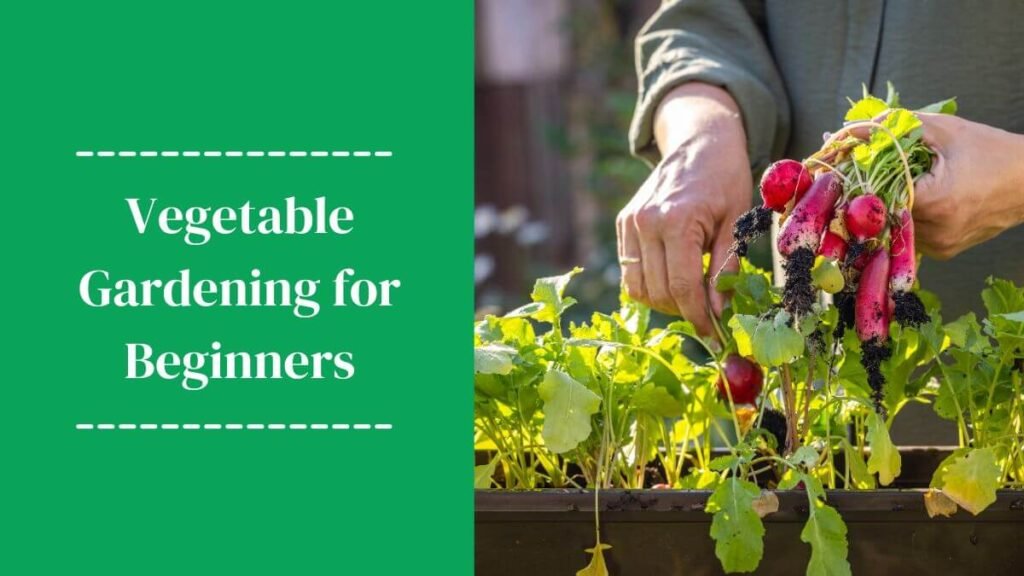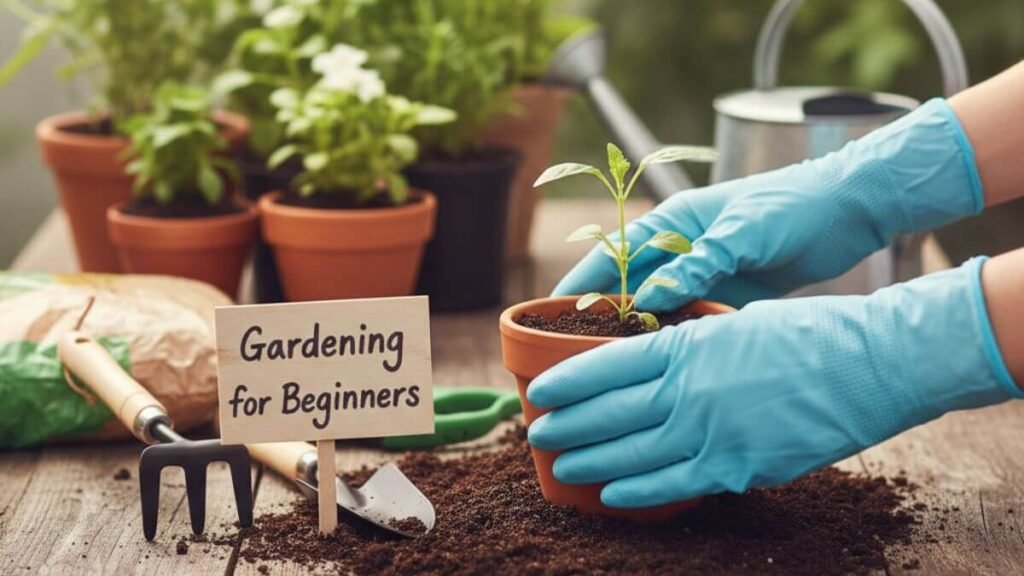
Gardening is one of the most rewarding hobbies you can start, no matter your age or experience level. Whether you have a sprawling backyard, a small balcony, or even just a sunny windowsill, you can enjoy the simple joy of nurturing plants and watching them grow. For beginners, gardening may feel overwhelming—what soil should you use, which plants are easiest to grow, how often should you water? Don’t worry—you don’t need to be born with a “green thumb” to succeed. Gardening is a skill, and like any skill, it can be learned step by step.
In this Gardening for Beginners guide, we’ll walk you through everything you need to know to start gardening from scratch. From choosing your first plants and setting up your garden space to maintaining healthy soil and dealing with pests, this article will give you the confidence to dig in and grow something beautiful (and edible!).
Why Start Gardening?
Gardening is a simple yet powerful way to enhance your well-being and connect with nature. It offers a peaceful escape from daily stress, improves mental clarity, and provides gentle physical activity. Whether you’re growing flowers, herbs, or vegetables, nurturing plants brings a sense of accomplishment and joy. Plus, gardening supports the environment by attracting pollinators, improving air quality, and promoting sustainable living—making it a rewarding hobby for both you and the planet.
- Benefits of Gardening for Beginners
- Choosing the Right Type of Garden
- Picking the Perfect Spot
- Planning Your Garden Layout
- Choosing Easy Plants for Beginners
- Preparing Soil and Planting
- Watering & Garden Care Essentials
- Dealing with Pests and Common Garden Problems
- Harvesting Your Crops
- Seasonal Gardening Tips
- FAQs About Gardening For Beginners
Benefits of Gardening for Beginners
Gardening is a rewarding hobby that offers a wide range of benefits, especially for beginners. It’s more than just planting seeds—it’s about nurturing life, improving your well-being, and creating a space that brings joy and purpose. Whether you’re looking to boost your mood, enjoy light physical activity, grow your own food, or make a positive impact on the environment, gardening provides the perfect opportunity to do it all. The Benefits for Beginners:
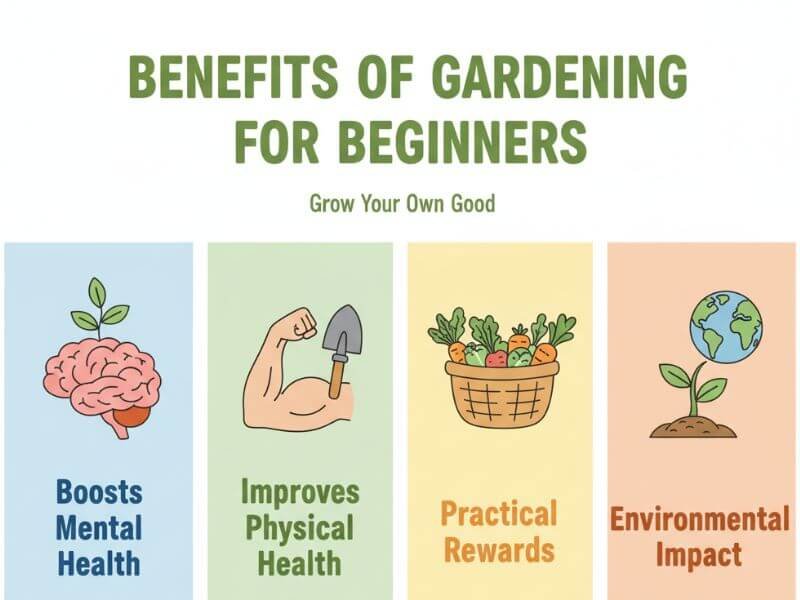
1. Boosts Mental Health
Spending time outdoors, digging in the soil, and caring for plants has been shown to reduce stress, anxiety, and depression. Gardening provides a form of mindfulness—when you’re focused on nurturing your plants, you’re fully in the moment, which is calming for the mind.
2. Improves Physical Health
Gardening is gentle exercise. Pulling weeds, planting seeds, or carrying a watering can all contribute to physical activity, flexibility, and strength without being too strenuous. Plus, spending time outdoors gives your body natural vitamin D.
3. Practical Rewards
Imagine walking outside and harvesting fresh herbs for your dinner or picking flowers to brighten your living room. Growing your own food and plants not only saves money but also provides satisfaction and pride in your efforts.
4. Environmental Impact
By gardening, you help the planet. Plants filter the air, support pollinators like bees and butterflies, and reduce waste if you compost at home. Even a few pots of herbs on a balcony can make a difference.
Check out our post: “22 Fun Winter Hobbies to Keep You entertained All Season Long”
Choosing the Right Type of Garden
Every beginner needs to start with a style of gardening that matches their space, lifestyle, and goals. Luckily, there are many options:
1. Container Gardening
Perfect for apartments, balconies, or small patios. All you need are pots, containers, or even repurposed buckets. You can grow herbs, small vegetables, and flowers in containers.
Pros: Portable, easy to manage, requires little space.
Cons: Needs regular watering since containers dry out faster.
2. Raised Bed Gardening
This involves building a wooden or stone box filled with soil, usually 6–12 inches deep. Raised beds make gardening more organized and easier on your back.
Pros: Great for controlling soil quality and drainage.
Cons: Requires initial setup effort and cost.
3. In-Ground Gardening
Traditional gardening directly in the soil works best if you have a yard. It allows for large, expansive gardens.
Pros: No container restrictions, perfect for large crops.
Cons: Weeds, pests, and soil quality can be harder to manage.
Tip: Start small. Even if you dream of a huge vegetable patch, begin with one or two containers or a single raised bed. This helps you build confidence without feeling overwhelmed.
Picking the Perfect Spot
Choosing the right location is one of the most important steps in starting a successful garden. The spot you pick will determine how much sunlight, water, and protection your plants receive, all of which affect their growth and health. By taking the time to assess your space carefully, you can create the ideal environment for your garden to thrive.
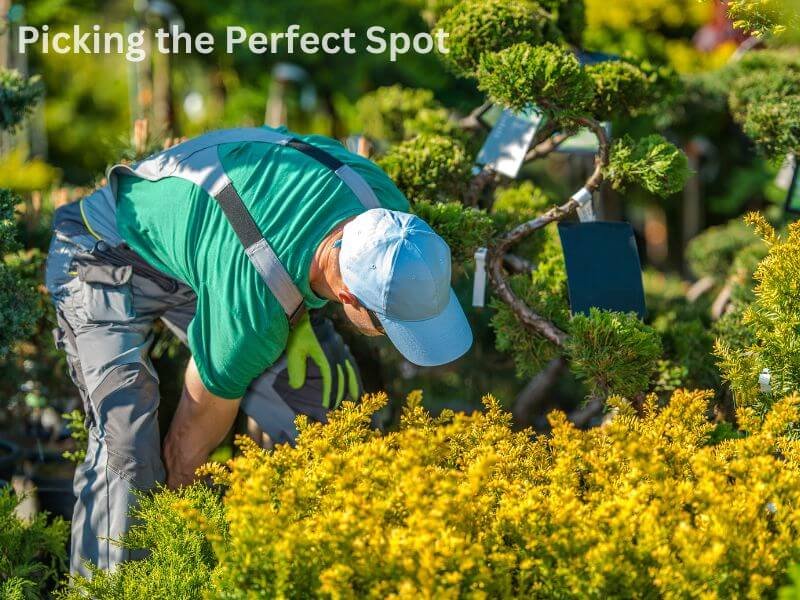
- Sunlight: Most vegetables and flowers need 6–8 hours of direct sunlight daily. Watch your space at different times of day to see where the sun falls.
- Soil & Drainage: Plants don’t like “wet feet.” Make sure your soil drains well. If you’re gardening in containers, choose pots with drainage holes.
- Accessibility: Choose a spot that’s easy to reach for watering, weeding, and harvesting. If it’s too far away or difficult to access, you may neglect it.
- Protection: Look for natural wind barriers like fences or hedges. A little shelter can save delicate plants.
Planning Your Garden Layout
Planning is fun and can save you headaches later.
- Start small: A 4×4-foot raised bed or a few pots is enough for beginners.
- Group plants with similar needs: For example, basil and tomatoes love full sun and regular watering, so they grow well together.
- Think about spacing: Crowding plants can lead to disease and poor growth. Follow spacing instructions on seed packets.
- Sketch a layout: Even a rough drawing helps you visualize where each plant will go.
Choosing Easy Plants for Beginners
When starting a garden, choosing the right plants can make all the difference. Not all plants are easy for beginners—some need constant care, while others are hardy and forgiving. Here are some of the easiest to start with:
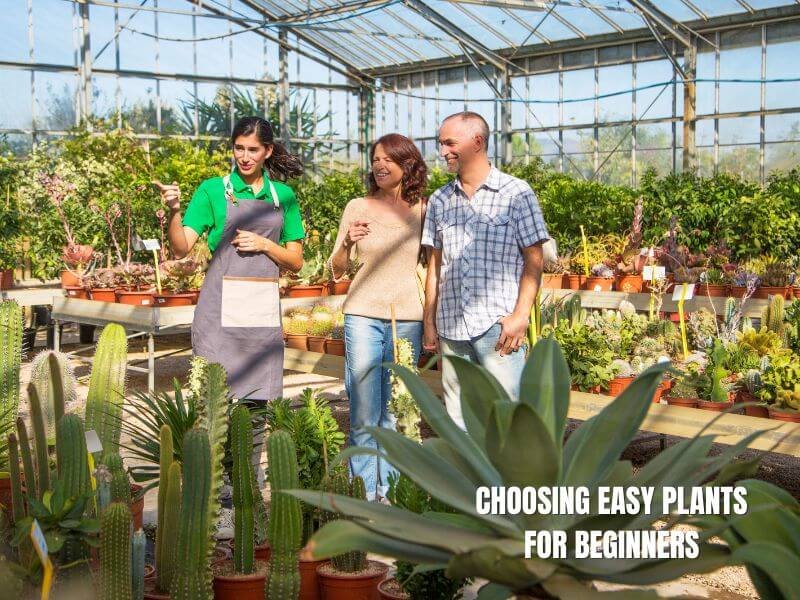
Vegetables:
Growing your own vegetables is a rewarding way to enjoy fresh, healthy produce right from your garden. For beginners, starting with easy-to-grow vegetables ensures a successful and enjoyable experience. These vegetables are hardy, require minimal maintenance, and provide quick results, making them perfect choices for anyone new to gardening.
- Tomatoes – They thrive in containers and provide plenty of fruit.
- Lettuce – Fast-growing and can be harvested continuously.
- Radishes – Quick to sprout and harvest (in just a few weeks).
- Cucumbers – Great for summer, though they need a trellis or support.
Herbs:
Growing herbs is a simple and satisfying way for beginners to start their gardening journey. Herbs are generally low-maintenance, versatile, and can thrive even in small spaces like pots or windowsills. Starting with easy-to-grow herbs like basil, mint, rosemary, and chives allows you to enjoy fresh flavors for cooking while building confidence in your gardening skills.
- Basil – Perfect for pasta and salads.
- Mint – Very hardy (but keep it in a pot, as it spreads quickly).
- Rosemary – Low-maintenance and aromatic.
- Chives – Easy to grow, and they come back year after year.
Flowers:
Adding flowers to your garden not only brings beauty and color but also supports a healthy ecosystem. For beginners, choosing easy-to-grow flowers ensures quick success and minimal maintenance. Varieties like marigolds, sunflowers, and zinnias are hardy, vibrant, and perfect for attracting pollinators, making them ideal choices for a beginner-friendly garden.
- Marigolds – Bright, cheerful, and help repel pests.
- Sunflowers – Tall, fun to grow, and loved by pollinators.
- Zinnias – Colorful and bloom all summer.
Preparing Soil and Planting
Healthy soil is the foundation of a thriving garden, and proper preparation is key for successful planting. For beginners, understanding how to enrich your soil and plant correctly ensures your seeds and seedlings grow strong and healthy. With a few simple steps, you can create nutrient-rich soil that helps your garden flourish all season long.
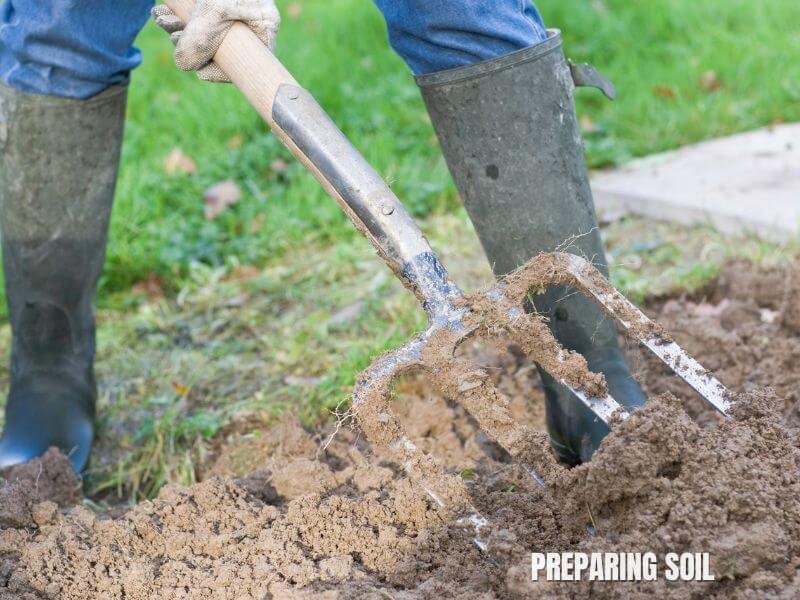
- Test your soil: You can buy a simple test kit to check pH and nutrients. Most plants prefer a neutral pH of 6–7.
- Add organic matter: Mix in compost, aged manure, or store-bought garden soil to improve fertility.
- Planting depth and spacing: Always read seed packets—they’ll tell you how deep and far apart to plant seeds.
- Mulching: Add a 2–3 inch layer of mulch (straw, leaves, or wood chips) around plants to retain moisture and suppress weeds.
Watering & Garden Care Essentials
Proper watering and regular garden care are crucial for keeping your plants healthy and thriving. While water is essential, too much or too little can harm your garden, so it’s important to get it right.
Watering Tips:
- Frequency: Most gardens need about 1 inch of water per week. Container plants may require daily watering, especially during hot weather.
- Best Time: Water early in the morning to allow leaves to dry throughout the day, reducing the risk of fungal diseases.
- Technique: Focus on watering at the base of the plants rather than the leaves to ensure the roots absorb moisture efficiently.
Other Essential Garden Care:
- Weeding: Remove weeds early before they compete with your plants for nutrients and water.
- Pruning: Trim dead or overgrown leaves and stems to encourage healthy growth and improve airflow.
- Staking: Support tall or vining plants like tomatoes with stakes or cages to prevent them from bending or breaking.
By following these simple watering and maintenance practices, even beginners can keep their garden flourishing all season long.
Dealing with Pests and Problems
You Can also Read: “Ice Fishing for Beginners”
Dealing with Pests and Common Garden Problems
Even the healthiest beginner garden can face challenges from pests and other issues. Knowing how to identify and address them early helps keep your plants strong and thriving.
Common Pests:
- Aphids: Small insects that cluster on stems and leaves. Spray them off with water or use natural remedies like neem oil.
- Slugs & Snails: These pests chew holes in leaves and can damage young plants. Try copper tape barriers or natural traps to keep them away.
- Caterpillars: Often found munching on leaves. Remove them by hand or attract birds to help control their population naturally.
Common Garden Problems:
- Yellow Leaves: Usually a sign of overwatering, poor drainage, or nutrient deficiencies. Adjust watering habits and enrich soil with compost or fertilizer.
- Slow Growth: Plants may lack essential nutrients. Regularly add compost or balanced fertilizer to promote healthy growth.
- Wilting: Can result from under watering, overwatering, or root issues. Check soil moisture and plant roots to identify the cause.
By monitoring your garden regularly and addressing problems promptly, you can prevent small issues from becoming major setbacks and enjoy a healthy, productive garden.
Tip: Always look for natural solutions first before resorting to chemicals.
Harvesting Your Crops
Harvesting is one of the most satisfying parts of gardening, allowing you to enjoy the fruits of your hard work while encouraging healthy plant growth.
- Vegetables: Pick your vegetables regularly to promote continuous production. Crops like cucumbers, beans, and zucchini produce more when harvested often, ensuring a steady supply throughout the season.
- Herbs: Regularly pinch off leaves from herbs such as basil, mint, and chives. This prevents them from flowering too soon and encourages bushier, more productive growth.
- Flowers: Cut blooms frequently to create fresh bouquets and stimulate new flower production. Flowers like marigolds, zinnias, and sunflowers will reward you with vibrant, long-lasting blooms when maintained properly.
Consistent harvesting not only provides fresh ingredients and beautiful flowers but also keeps your garden healthy, productive, and thriving all season long.
Seasonal Gardening Tips
Gardening needs vary throughout the year, and adjusting your approach each season helps your garden thrive.
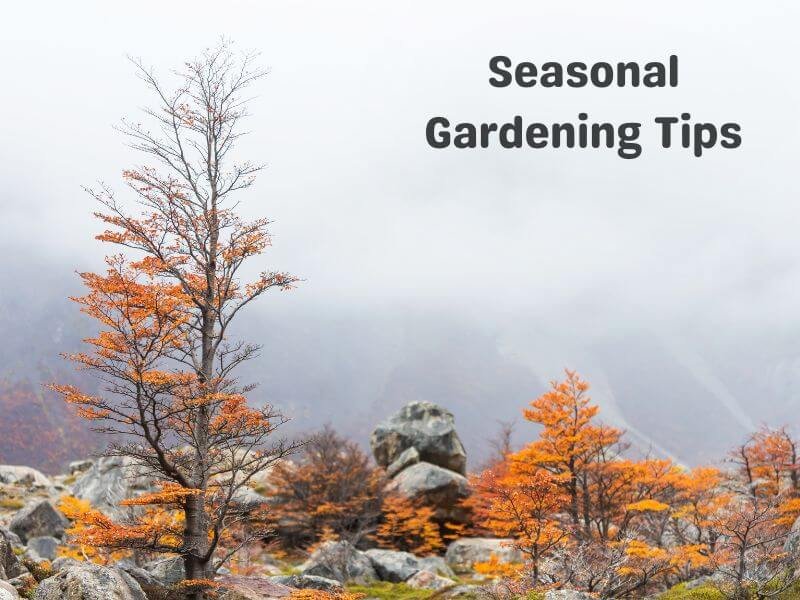
- Spring: This is the ideal time to start planting most vegetables, herbs, and flowers. Prepare your soil by adding compost or fertilizer, and sow seeds for a healthy growing season.
- Summer: Focus on consistent watering, weeding, and pest management. Harvest vegetables regularly to encourage continuous production and keep your garden productive.
- Fall: Plant cool-weather crops like spinach, kale, and radishes. Add a layer of mulch to protect soil and retain moisture as temperatures begin to drop.
- Winter: Use this time to plan next year’s garden. You can also grow herbs indoors on a sunny windowsill to enjoy fresh flavors all year round.
By following seasonal gardening practices, you can maximize your garden’s growth, productivity, and beauty throughout the entire year.
Check out our post: “Bikepacking for Beginners”
FAQs About Gardening For Beginners
1. What is the easiest way to start gardening for beginners?
The easiest way to start Gardening For Beginners is by choosing a small, manageable space like a container, raised bed, or windowsill. Start with hardy, low-maintenance plants such as lettuce, tomatoes, basil, or marigolds. Focus on learning basic watering, soil preparation, and plant care techniques.
2. Which plants are best for beginners?
For Gardening For Beginners, start with easy-to-grow vegetables, herbs, and flowers. Vegetables like tomatoes, radishes, and cucumbers; herbs like basil, mint, and chives; and flowers like marigolds, sunflowers, and zinnias are all excellent choices. These plants are forgiving and provide quick, rewarding results.
3. How often should I water my garden?
Most beginner gardens need about 1 inch of water per week. Container plants may need daily watering, especially during hot weather. The best time to water is early in the morning, and always water at the base of plants to ensure the roots absorb moisture efficiently.
4. How do I prevent pests and garden problems as a beginner?
Gardening For Beginners can be protected from pests by using natural methods such as neem oil, copper tape for slugs, and hand-picking caterpillars. Monitoring your plants regularly helps you catch issues like yellowing leaves, slow growth, or wilting early, so you can adjust watering, improve soil, or add compost as needed.
5. Can I garden if I have limited space?
Absolutely! Gardening For Beginners works in small spaces like balconies, patios, or even windowsills. Container gardening and vertical gardening are perfect solutions for growing vegetables, herbs, and flowers in compact areas while still enjoying the full benefits of gardening.
Gardening is a journey, and for beginners, it’s important to remember that it’s perfectly normal to make mistakes along the way. Every gardener, no matter how experienced, learns through trial and error. Start small with a few easy-to-grow plants, focus on enjoying the process, and celebrate each success, no matter how minor.
Experimenting with different vegetables, herbs, and flowers each season will help you gain confidence and discover what works best in your space. Over time, your skills will grow alongside your garden, and you’ll enjoy the satisfaction of nurturing life while creating a beautiful, productive outdoor space.
Remember, gardening isn’t just about the harvest—it’s about the joy, learning, and connection to nature that comes with each step. Embrace the journey, and your garden will flourish year after year.
YOU CAN ALSO READ :
*Best 16 Outdoor Hobbies to Try: Get the Most Out of Your Life.
*12 Attractive Hobbies for Seniors: Keep Yourself Active and Engaged
*Coin Collecting for Beginners: 15+ Useful Guidelines You Need to Know
